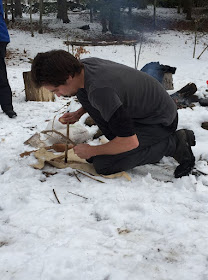About Balsam Fir
This evergreen is native to the boreal forests of North America. It grows in Connecticut and ranges as far west as the Canadian Rockies and as far south as the Appalachian Mountains of West Virginia. This is a medium-sized, shade-tolerant evergreen that has an average height of sixty feet. It spires up conically ending in a narrow crown. The needles are flat and have two distinctive white stripes on their undersides. The bark is smooth and covered in resinous blisters that are aromatic. The cones grow to four inches long.
Medicinal Uses and Other Uses
Algonquian communities use every part of the Balsam Fir tree - the needles, roots, inner bark, and even the resin. Roots are gathered and seeped in water and applied to relieve pain from rheumatism. An infusion of needles is used as an antiseptic to treat sores and wounds. A decoction of the root mixed with balsam sap is taken to treat kidney pain. The Ojibwa use a decoction of the balsam fir to induce sweating and as an expectorant to relieve soreness of the chest due to coughing. The Chippewa use the gum of the balsam fir as an analgesic for headaches, sore muscles, and coughs.
In addition to its medicinal use, the balsam fir was used in the sweat bath of the Ojibwa and the Penobscot used boughs of this tree to construct wigwams.
Did You Know...
Today, many people use the balsam fir as a Christmas tree.
The Passamaquoddy called this tree Poo-pooka-wigu, the Chippewa called it A'ninandak and the Penobscot called it Bopu'k hawe'k
Moose and whitetail deer eat the foliage and chickadees, squirrels and porcupines eat the seeds found in the pinecones.
A balsam fir resin was used in the Civil War to treat external injuries.




















